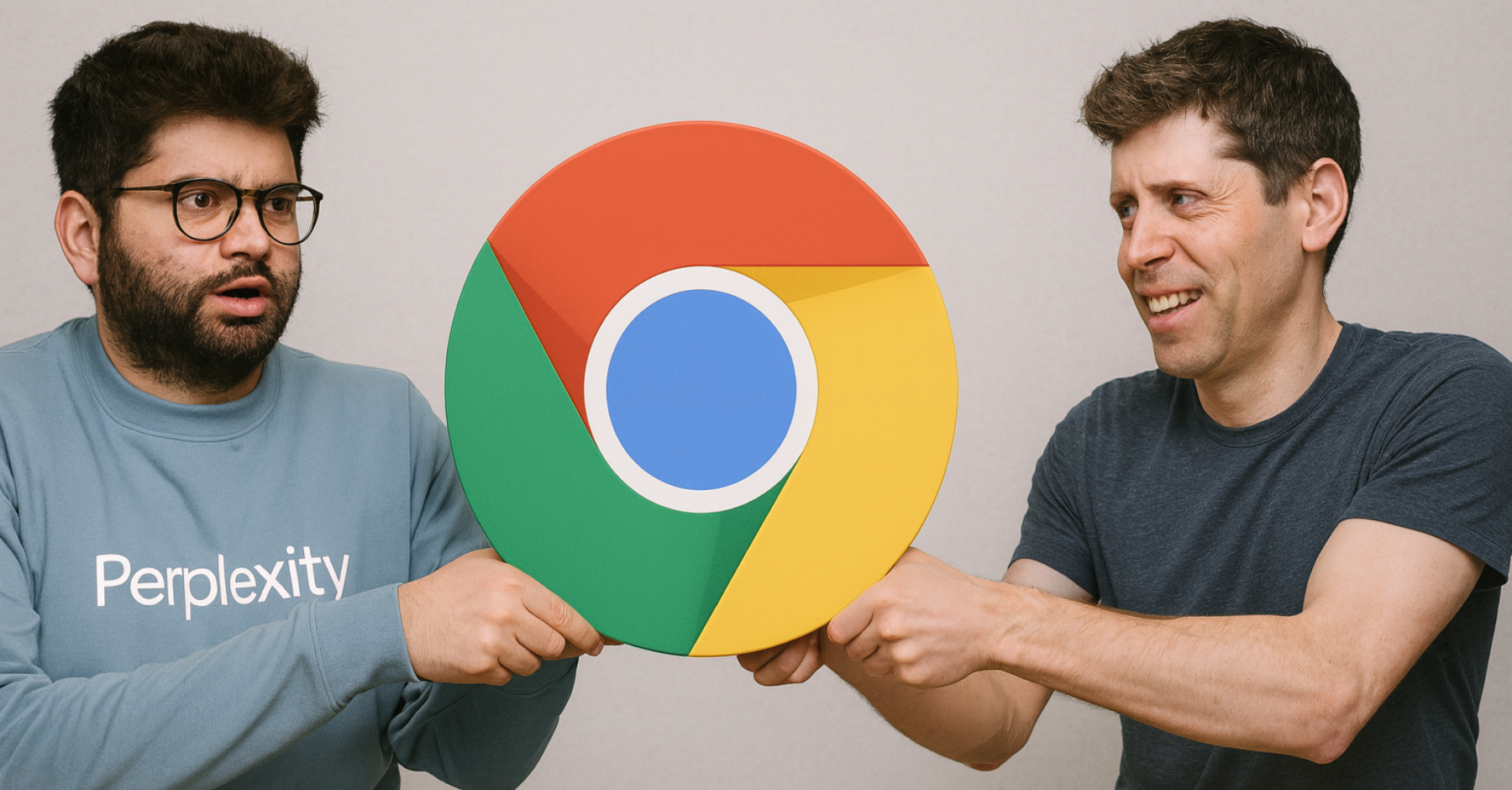Each week we’ll gather headlines and tips to keep you current with how generative AI affects PR and the world at large. If you have ideas on how to improve the newsletter, let us know!
What You Should Know
AI browser wars and the future of the internet
When Perplexity offered $34.5 billion for Google’s Chrome browser, many guessed it was a publicity stunt. That price is more than double the value of Perplexity, a company that made a similar bid to merge with TikTok back in January.
Sam Altman chimed in that OpenAI would gladly buy Chrome as well if Google is forced to sell. OpenAI is working on its own web browser, and this week, an engineer spotted a hint that it can be controlled by ChatGPT Agent.
Breaking into the browser market has traditionally required distribution muscle, as Microsoft showed with Internet Explorer in the 90s and Google with Chrome in the 00s. Could ChatGPT’s 700 million weekly users be enough to make a dent?
For Perplexity, whose Comet browser launched about a month ago, buying an existing user base makes a lot of sense, and offering double what their company is currently valued at shows how serious they might be.
The web is changing. AI search is supplanting traditional Google search. Zero-click searches are surging. Media are figuring out new business models less dependent on organic search traffic. Businesses are rethinking their content strategies. Everything that worked for years is quickly becoming less effective, if not obsolete.
Browsers that send agents out onto the internet to research, plan, even buy on behalf of their users will change the way we communicate. Who is your website for? The human who skims, shares, and decides? Or the bot that extracts, synthesizes, recommends, and acts?
It’s both, and it’s time to start thinking about how to ensure your messaging is cohesive across all platforms and your content is as optimized for AI bots as it is clear and resonant to humans.
We’ll have to wait and see who controls Chrome when all the dust settles, but for now, all signs point to a more agentic web browsing experience in the coming years.
Elsewhere …
- How AI can preserve a loved one’s voice and stories using SoulTech
- Grammarly gets a design overhaul, multiple AI features
- Google’s Gemini AI will get more personalized by remembering details automatically
- Google taps large language models to cut invalid ad traffic by 40%
- How AI is transforming wedding planning
 The new “it’s not X, it’s Y”
The new “it’s not X, it’s Y”
What’s happening: The GPT-5 update has changed the way ChatGPT writes. It seems to have cut down on em dashes, the rule of three, and the “it’s not X, it’s Y” construction that were all hallmarks of 4o. But GPT-5 has its own tells.
Watch out for: Instead of “it’s not X, it’s Y,” GPT-5 flips it to “it’s Y, not X.” For example, “A go-to-market built for households, not headlines.”
Try this: If you start looking for it, you’ll see it everywhere. GPT-5 is a better writer than 4o, but not a good writer. As you know, any AI output requires heavy editing, and there are new turns of phrase we’ll all be looking for and replacing.
Quote of the Week
“Listen, we’re going to ship a device that is going to be so beautiful. If you put a case over it, I will personally hunt you down.”
— Sam Altman, CEO of OpenAI, on the AI device he’s working on with Jony Ive
How Was This Newsletter?



